Curiosity for exobiology
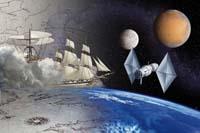
The question is not the half-night cough of the goat. The answer, of course, does not know it, and is about to see if they will ever know it. But the effort is worth it, the search for the answer is so enriching.
To begin with, they will have to know where and what to look for exactly to find life. They investigate, among other things, how life on Earth arose. And there is a single model of life search outside the Earth: Terrestrial. Therefore, it is essential to know the conditions in which life arose on Earth (assuming it was so) to search for planets with similar conditions.
The truth is that it can be a very different kind of life in the broad universe. But the simplest thing is to find a life similar to what we know: based on carbon, in close relation to water, with some molecule of storage of information... In short, a system similar to that of the cell.

At the limit of life
They seek the first living system, on the border between life and the inanimate. And the researchers adopt different paths to reach this border. From the biological point of view, for example, from the current living beings to time, one of the objectives is to analyze the evolution of the genes and know the genome of the first ones. From a chemical point of view they make the opposite way, that is, they leave the inanimate to reach the first living beings. Combining biology and chemistry, they study cellularity, looking for the first system that meets the definition of life.
One of the hypotheses is that this system was a single molecule, that is, before the cell there was a living system. To do this, this molecule had to meet two requirements: to store information (genetic code) and to be able to double. Currently this work is done by two types of molecules: DNA and enzymatic proteins. Some believe that before creating DNA, the RNA would perform both functions. This hypothesis is known as the world of RNA.
One of the proponents of the RNA world hypothesis is Sydney Altman, 1989 Nobel Prize. He discovered a strong argument in favor of the RNA world: A RNA catalyst (which has also found more). Therefore, the RNA, in addition to storing information, could be possible to perform enzymatic work and duplicate.
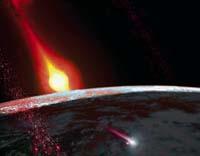
However, the main tendency is to think that the first living system was a cell. Some hypotheses consider it fundamental that the first living system is separated from the medium, separated by a membrane. The membrane is critical for any living system, since it controls the inputs and outputs of energy, so study the molecules that form it and its precursors.
So what to investigate
Other starting points for research. One of the characteristics of life is that some molecules, such as amino acids, are a certain isomer (although in nature both isomers are in the same amount), so some research is directed to the difference between isomers. The proportion of isotopes is also special in living beings, so others also act behind these isotopes.

Another fundamental issue is when and how life arose. As Altman said, we cannot go back in time, but astronomers and geologists try to approach this time with the traces they have today. They study the genesis of the Earth and the whole solar system, as well as when and under what conditions life was born. In this way, we could search for other planets that meet these conditions.
It is true that the Earth also lives in very harsh conditions: extremophiles are an example of this: bacteria that eat iron, that live in very acidic means like Tinton River or salts... However, experts do not believe that life arose spontaneously in an environment like this, but it arose in mild conditions and some living beings evolved to adapt to harsher conditions.
However, in exobiology, extremophiles are also investigated, but not because they give the key to the origin of life, but because they can give some clue about where to find life outside the Earth.
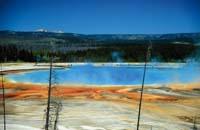
Hypothesis hypothesis hypothesis hypothesis hypothesis hypothesis hypothesis hypothesis
However, there are those who think that life did not arise on Earth, but came from another place (brought by a meteorite). It is a hypothesis called exogenia -- better known as panspermia, but more limited than this --. Life appeared somewhere in the universe, then came to Earth, and as here had the right conditions, it multiplied and evolved.
Simulating the possible spatial conditions, through different experiments, they have discovered that some basic molecules for life can be generated spontaneously. The most classic experiment on the genesis of life is that of Miller (1953), who caused electric shocks to a mixture of methane, ammonia, water vapor and hydrogen, resulting in several amino acids (some of the basic molecules of life). Along this path, other experiments have been carried out to obtain complex organic molecules from common compounds in space or other planets, such as ultraviolet radiation, which is very abundant in space.
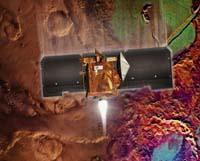
Another argument used by supporters of the exogenous hypothesis is the meteorite ALH84001. It was discovered in Antarctica in 1984 and, according to some NASA exobiologists, the nodules contained in the meteorite are very similar to those produced by bacteria. Therefore, it is possible that these structures have been created by some living being, but for the moment they do not know.
The meteorite is about four thousand five hundred years old and comes from Mars. In fact, within the exogenous hypothesis, there are those who think that life arose on Mars. The Marcians, more suitable than the conditions of the Earth, were created at that time. And they say that life was born on Mars and then came to Earth. That is why efforts have been made to find life tracks on Mars and will continue to be made.
In addition to Mars, life could be present on other planets and satellites (or could be, time and time should also be taken into account and in exobiology). Next to Mars, the podium is composed of two satellites: Europa de Jupiter and Titanes de Saturn. That in our solar system, but in general we look at distant planets. In the last decade, countless exoplanets have been found, so they believe that our solar system is quite normal in the universe and that there can be many more planets like Earth.
On that path, they investigate the habitability of the planets: if a planet meets or has never fulfilled the conditions to develop its life. It must be taken into account that when investigating the distant planets, they have a great technological limitation. And, therefore, they determine the size of a planet, the atmosphere, the distance to the Sun, etc., to which it must be adjusted to be able to find life in the best conditions. Thus, there are about 50 planets that can have life and from time to time are news of this type.

Game of odds
But as technology advances, the number of planets that can have life changes. The probability that in the Universe there are other lives other than that of the Earth is measured mathematically, but logically it is necessary to use the data provided by technology to use mathematical tools. And they still do not know that probability. For example, the result of the Drake equation cannot be determined.Astrophysicist Frank Drake proposed an equation to calculate the number of possible technological civilizations in the universe. This amount depends on seven factors: The number of stars created annually in the Milky Way, the percentage of stars that surround the planets, the proper orbit to the life of a few of those planets, including the number of times that life has occurred, the number of times that intelligent life has developed in which life has occurred, and how many of them have developed technology (and the desire to communicate). In addition to these six, there is a correcting factor that takes into account time: the duration of this intelligent and technological civilization.
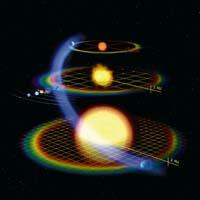
As seen, all these factors vary with discoveries. And this equation has no result. Yes, it seems that astronomical factors give a much more optimistic image than that provided by biology, so biology is the biggest limitation to developing an intelligent life.
However, despite the existing uncertainties, there is a large project underway for a long time in the search for technological civilizations: SETI. As its director Jill Tarter said at the 2006 General Assembly of Astronomers: "Although there are many civilizations, it is not surprising that no one has yet been detected." In fact, they explore the sky in search of radiofrequencies, directed at each moment to a specific point, and in each of these points they work with nine dimensions: the three corresponding to space, time, frequency, sensitivity...

However, more than one will wonder why they have not contacted if there is intelligent life. Experts approach the question with good humor and more than one has responded in jokes, such as Stephen Hawking: "Seeing humanity, how do you want to have relationship with us?"
As you can see, in exobiology there is no lack of humor. And as it is full of assumptions and hypotheses, and they do not get clear results, there are also those who think that real science is not. In this field, the limit of knowledge is marked by technology, imagination has no limits.


Buletina
Bidali zure helbide elektronikoa eta jaso asteroko buletina zure sarrera-ontzian











